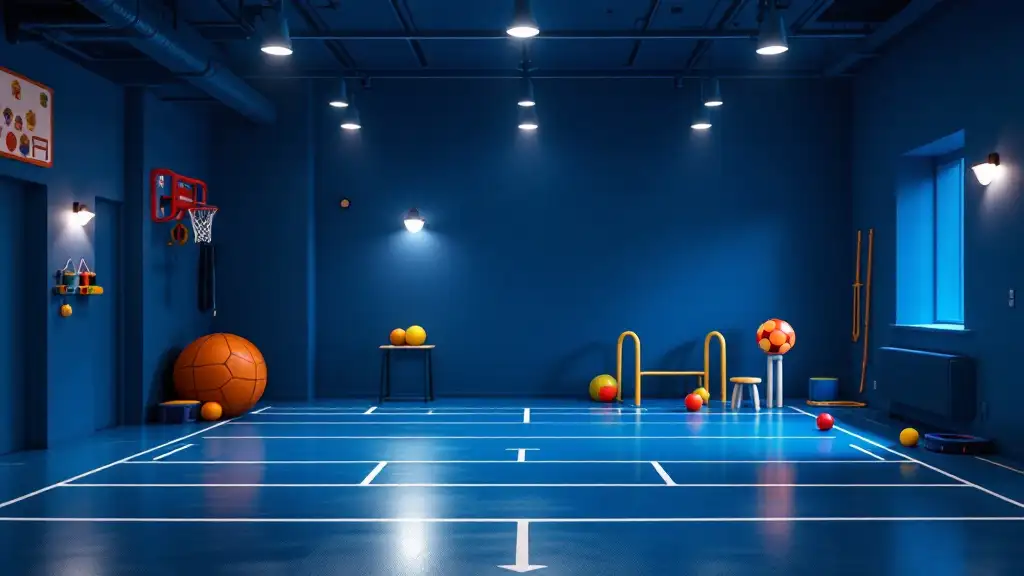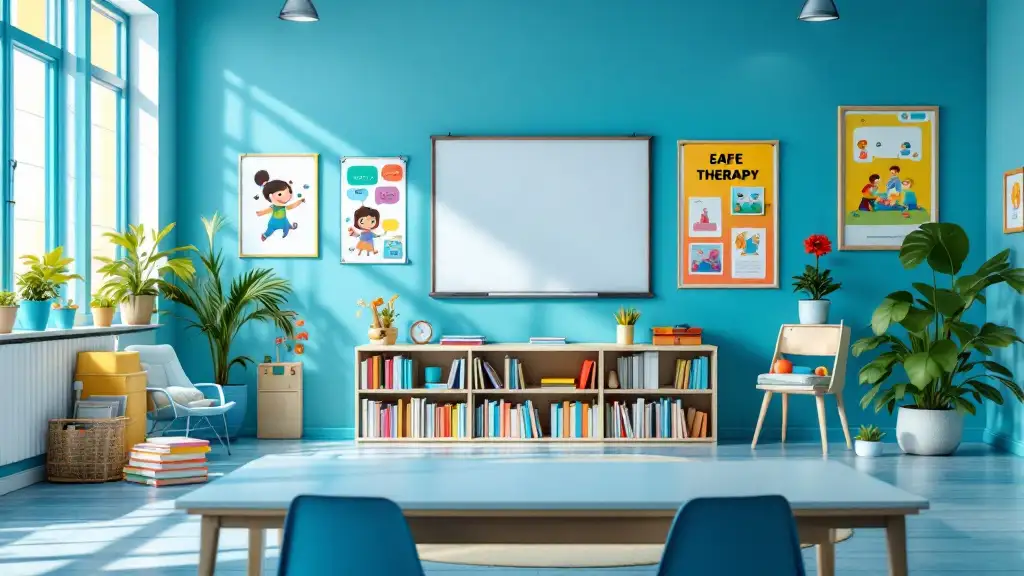
The Power of Routine in Supporting Development
Creating a structured routine is a vital component in supporting individuals with developmental disabilities. Well-designed routines provide stability, predictability, and a sense of security, which are crucial for fostering independence, reducing anxiety, and promoting emotional well-being. This article explores effective methods, best practices, and supportive techniques to develop personalized routines that cater to the unique needs of each individual, ultimately enhancing their quality of life.
Understanding the Benefits of Structured Routines

What benefits do structured routines offer for individuals with developmental disabilities?
Structured routines provide a foundation of stability and predictability that is essential for individuals with developmental disabilities. By establishing regular patterns for daily activities such as waking up, mealtimes, hygiene, and bedtime, routines create a sense of safety and control. This predictability helps reduce feelings of uncertainty and anxiety, especially during transitions or stressful moments.
Beyond offering comfort, routines support skill development. Breaking tasks into manageable steps allows individuals to learn and practice new skills at their own pace, gradually increasing their independence. For example, a clear morning routine can help an individual master grooming and dressing, fostering self-confidence.
Routines also play a significant role in minimizing stress. When individuals know what to expect, they feel more secure, which decreases agitation and resistance to change. During unfamiliar situations or disruptions, having a structured plan helps maintain a sense of normalcy.
In addition, routines enhance emotional well-being by encouraging positive social interactions. Routine activities like family meals or shared chores promote bonding and communication, boosting confidence and happiness.
To achieve these benefits, routines should be tailored individually. Incorporating visual supports—such as pictures, symbols, or schedules—helps clarify expectations. Flexibility within the routine allows adaptation to changing needs or circumstances, ensuring that routines remain empowering and effective.
In summary, structured routines are vital in supporting individuals with developmental disabilities. They foster independence, reduce anxiety, and promote emotional health, significantly improving their overall quality of life.
Effective Methods to Establish Routines

What are effective methods for establishing structured routines for individuals with developmental disabilities?
Creating consistent and meaningful routines for individuals with developmental disabilities involves several practical strategies that promote independence, reduce anxiety, and support emotional well-being.
One of the most effective tools is the use of visual supports. Visual schedules, symbols, and written words help clarify activities and expectations, making it easier for individuals to understand and anticipate what comes next. These visual aids can include pictures or icons that represent daily tasks like brushing teeth, preparing meals, or participating in therapy sessions.
Breaking complex tasks into smaller, manageable steps facilitates learning and reduces overwhelm. For example, dressing can be divided into putting on socks, then shoes, followed by a shirt, guiding the individual steadily through each task.
Maintaining consistent timing for daily activities, such as mealtimes, bedtimes, and times for therapy, fosters predictability, which in turn alleviates anxiety and encourages confidence.
Incorporating preferred activities into routines makes the day engaging and motivates participation. Choices within routines, such as selecting between two outfits or activity locations, empower individuals and foster autonomy.
Clear instructions paired with visual cues are important for understanding and executing tasks correctly. Using timers and visual signals like countdowns prepare individuals for upcoming transitions, helping them adjust smoothly between activities.
Positive reinforcement plays a critical role. Praising efforts and achievements encourages ongoing compliance and builds motivation.
Finally, it’s essential to review routines regularly with the individual and caregivers to adjust and tailor activities based on changing needs and progress. This ongoing process ensures routines remain supportive, effective, and aligned with personal growth.
| Strategy | Description | Practical Tip |
|---|---|---|
| Visual supports | Schedules, symbols, and words for clarity | Use pictures for meal and activity plans |
| Breaking tasks | Divide tasks into small, manageable steps | Use checklists or visual cues |
| Consistent timing | Same time for meals, sleep, activities | Maintain routines day-to-day |
| Preferred activities | Include activities individual enjoys | Incorporate favorite toys or games |
| Clear instructions and choices | Simple, visual directions with options | Offer two activity choices |
| Timers and visual cues | Signaling transitions to prepare for change | Use visual timers or countdowns |
| Positive reinforcement | Praise or rewards to encourage routine adherence | Reward with preferred activities |
Implementing these methods thoughtfully ensures structure that nurtures growth, independence, and emotional stability in individuals with developmental disabilities.
Personalizing Routines to Suit Individual Needs

How can routines be tailored to meet the individual needs of persons with developmental disabilities?
Creating routines that truly support individuals with developmental disabilities involves a thoughtful approach to personalization. First, it's essential to incorporate each person's unique preferences, strengths, and challenges. For instance, some individuals may favor certain types of activities or respond better to specific communication styles. By understanding these individual traits, caregivers can design routines that foster engagement and build confidence.
Flexibility is equally important. Routines should not be rigid; instead, they need to accommodate changes in the person’s needs, goals, or circumstances. This adaptability ensures that routines remain relevant and empowering, rather than causing frustration or resistance. For example, allowing for extra breaks or alternative activities helps maintain comfort and motivation.
Starting with small, manageable steps simplifies routine implementation. Focusing initially on key activities like mealtimes, personal hygiene, or short learning sessions reduces overwhelm. Gradually, additional activities can be added as confidence and skills develop.
Using visual aids such as pictures, charts, or symbols plays a crucial role in helping individuals understand and follow routines. Visual supports make transitions smoother and minimize anxiety, especially during unfamiliar or stressful times. Incorporating scheduled breaks within routines offers opportunities for self-regulation and emotional security.
Supporting emotional well-being and independence is the ultimate goal. Tailored routines promote autonomy by allowing choices and encouraging participation in daily activities. Collaboration among caregivers, family members, and professionals—including therapists and educators—ensures routines are aligned with the person’s evolving needs.
In summary, effective routines are personalized, flexible, and supported by visual tools and professional input. These strategies create a foundation for growth, confidence, and inclusion, enabling individuals with developmental disabilities to thrive in their everyday lives.
Creating Effective Daily Routines: Best Practices

What are best practices for creating effective daily routines for individuals with developmental disabilities?
Developing daily routines that truly benefit individuals with developmental disabilities involves a thoughtful and personalized approach. One of the most important steps is to tailor routines to each person’s interests, strengths, and challenges. This personalization helps make routines feel empowering and engaging rather than overwhelming, fostering motivation and independence.
Visual supports play a vital role in effective routine management. Tools like visual schedules, social stories, and picture charts clearly depict daily activities, making it easier for individuals to understand what’s next. These visual cues reduce anxiety, facilitate transitions, and promote active participation in daily tasks.
Consistency and predictability are fundamental components of successful routines. When activities occur at regular times and in a familiar order, individuals experience a sense of safety and stability. However, it’s equally important to incorporate flexibility—allowing adjustments when needed—so routines remain accessible and responsive to changing needs or circumstances.
Incorporating engaging activities, such as music, arts and crafts, outdoor play, or hobbies, enhances enjoyment and emotional well-being. These activities should be integrated seamlessly into the routine, providing balance between structured tasks and leisure.
Focusing on life skills is essential for supporting independence. Routines should emphasize practical skills like personal hygiene, communication, social interaction, and community participation. Repetition and real-life practice solidify these skills over time.
Continual review and adjustment are crucial. Caregivers, professionals, and the individual should regularly evaluate what works well and what needs modification. This ongoing process ensures routines stay relevant, effective, and aligned with evolving goals.
By implementing these best practices—personalization, visual supports, consistency with flexibility, engaging activities, skill focus, and regular review—caregivers can create routines that serve as a foundation for growth, independence, and well-being in individuals with developmental disabilities.
Supporting Routine Adherence with Visual Planning and Scheduling

How can routines be tailored to meet the individual needs of persons with developmental disabilities?
Routines for individuals with developmental disabilities should be carefully personalized to align with their unique preferences, strengths, and challenges. This customization helps foster engagement, promote confidence, and support independence. Caregivers and support professionals typically start by assessing the individual's specific needs—such as communication abilities, sensory sensitivities, and developmental level—and then develop routines that are meaningful and achievable.
A well-tailored routine is adaptable, allowing for adjustments as the individual's needs evolve over time. Flexibility within routines ensures they remain relevant and beneficial, preventing frustration and promoting ongoing participation.
Structured routines offer predictability, which creates a sense of security and reduces anxiety, especially during transitions or stressful periods. Incorporating visual aids like pictures, symbols, or objects makes routines clearer and easier to follow, enhancing understanding and compliance.
Starting with small, manageable steps—such as simple tasks like brushing teeth or choosing outfits—egg on gradual skill-building and independence. Using visual supports and including scheduled breaks help manage sensory overload and prevent fatigue.
Ultimately, routines supported by caregivers, teachers, and therapists serve as a foundation for emotional well-being, autonomy, and striving towards personal growth and social inclusion.
The Road to Empowerment and Growth
Establishing a structured routine is a dynamic process that requires assessment, creativity, and collaboration among caregivers, professionals, and the individuals themselves. When routines are personalized, flexible, and supported by visual tools, they effectively reduce anxiety, foster independence, and enhance overall well-being. Regularly reviewing and adjusting routines ensures they stay aligned with evolving needs and goals, creating a stable foundation for lifelong growth. By embracing these best practices and supportive techniques, caregivers can empower individuals with developmental disabilities to reach their full potential, enjoy meaningful participation in daily life, and achieve greater personal independence.
References
- Routine for Individuals with Disability | Home Not Alone
- The Importance of Routine for Children with Disabilities
- Autism Routines: Build a Structured Daily Schedule for Success
- Routines and children with disability, autism or other additional needs
- 10 Ways To Establish Routines for Children with Autism
- How to Establish an Effective Daily Routine for Individuals with Autism
- Creating structure at home for children with disabilities












